Interview With A Fig Grower: Keith and Jack Chambers
How does a father and son duo grow figs in zone 8a? Can kids get into growing figs? How to grow a massive collection?
Hey, my figgy readers! So today, we have something special — not one BUT TWO fig growers we get to interview and learn more about. I’m really excited to have these guys with us and appreciate their time. Without further ado, here are father and son fig growing extraordinaires, Keith and Jack.
Keith has selected a song to set the vibe for the interview, so please press play and read on!
Location & growing zone: Rural South Arkansas, 8A
JACK: My name is Jack Chambers, and I am twelve, I participate in 4-H. I competed a week ago in a district BBQ competition, and I placed second. I have been barbecuing for 4 years now. For my sixth birthday, I asked for chickens. Now 6 years later I still have them, about twenty-eight in total, and there are 7 more in the brooder. I also have a dog named Rosey; she is seven years old. She can do a few tricks and obey simple commands like sit, stand up, lay down, get in your bed, stay and release (to eat her food).
KEITH: I am just a country boy who was born in a logging camp in Idaho to teenage parents but grew up in rural South Arkansas. I started working on construction sites and tomato farms at the age of ten and at the local livestock auction (sale barn) on Saturday mornings throughout junior high and high school. I bought my first truck with the money I saved and went to college on a National Merit Scholarship where I studied microbiology and electrical engineering. I did my graduate research (nanoengineering) in theoretical modeling, fabrication, and testing of optoelectrical devices and properties of conjugated polymers. My research was funded by DARPA and an NSF graduate fellowship and I published a number of journal articles on synchrotron research. You can see a more complete CV on LinkedIn.
These days I grow fruit trees, build furniture, homeschool my boy (Jack, age 12), volunteer as a rural firefighter, do engineering consultation, and occasionally help set up and calibrate analytical chemistry labs (instrumentation). Jack and I also build websites and are restoring my grandparents’ hundred-year-old house in the country with enough acres for plenty of fruit trees.
What got you into growing figs and can you tell us a little about how you grow?
JACK: My grandpa has three fig trees, and eating these made me want to eat more. We have about 650 fig trees 300-350 varieties. Right now, most of them are in #3’s, 3-gallon and 5-gallon pots; we plan to go inground with more, but at present we only have about twenty-five inground. We are currently working on a greenhouse for the potted plants in the winter. Our mix for the potted plants is 60% worm castings and 40% perlite. We fertigate in the summer with Miracle-Gro water-soluble fertilizer by hose and Shulz slow-release fertilizer. In the winter we normally use just MG. Well, we do have a few products we use: Mycostop, Mosquito Bits (BT), Dip’n Grow, and Ol’ Rusty a planer blade turned grafting knife.
KEITH: Some older members of our family, my Dad and his siblings were growing them already (some over trees over a hundred years old from what I’ve been told). In about 2012 I discovered how easy rooting fig trees was after pruning some at my dad’s house. A couple of years later, I requested scions from the UC Davis gene repository (when they still allowed public requests). Eventually, I found the Ourfig.com forum shortly before COVID and I have been an avid collector since then (circa 2019).
We currently have over six hundred fig trees of over three hundred different varieties and over a thousand fruit trees in total. We have recently started going in-ground and have over thirty that survived the winter (2024-2025) but the rest are almost all in three to five-gallon nursery pots. We are building a 20’ x 50’ greenhouse this summer as added space to overwinter our potted plants since the glass frontage area in my woodworking workshop (65’ x 15’) is getting pretty crowded in the winter.
We use sprinklers in the summer to water and fertigate (with a brass siphon mixer) on days it doesn’t rain. Hand watering gets old with so many pots. We use water-soluble fertilizer when we water and some slow-release granular fertilizer directly in the pots during the summer months to help stimulate a lot of vegetative growth. We’ve seen about one to three feet of new growth on most trees so far this spring.
In the winter we mostly hand-water from our rain barrels and rarely add fertilizer. Even though the trees usually aren’t fully dormant, it’s cool enough that they don’t grow much. The glass greenhouse and the new hoophouse give us plenty of room for head-starts in the spring, so we have a long season for our potted figs. We also grow a little bit of citrus (kumquats and finger limes) and plan to add more, like satsuma, lemon, and grapefruit.
We make our own potting mix from perlite (which we buy wholesale from an expander) and topsoil, worm-castings, leaf compost, and/or aged chicken manure from our farm. We also use a lot of coco coir and DE (diatomaceous earth), especially when rooting. For air layers and pre-rooting we use long-fiber sphagnum moss.
I love the black plastic nursery pots because they are easy to move and when we label them with paint pens (Posca) they stay labelled. It would be hard for me to get the light and well-draining soil mix I use without plenty of perlite, so I’d say those two items are key.
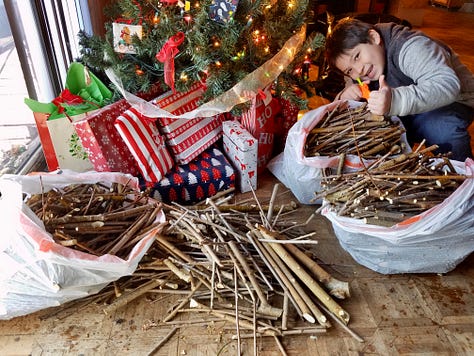
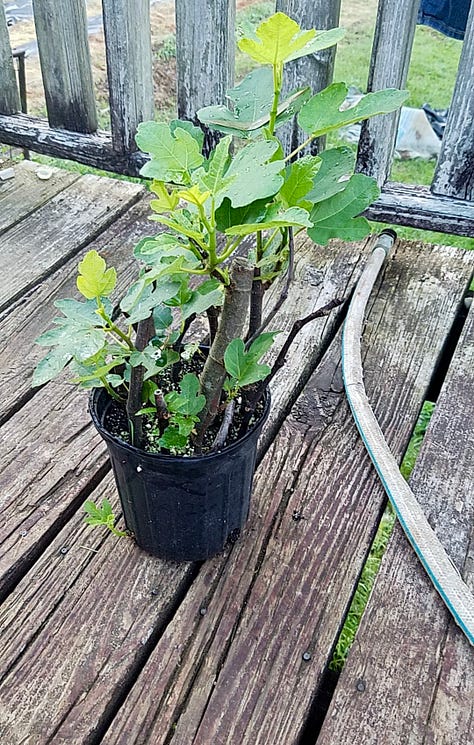
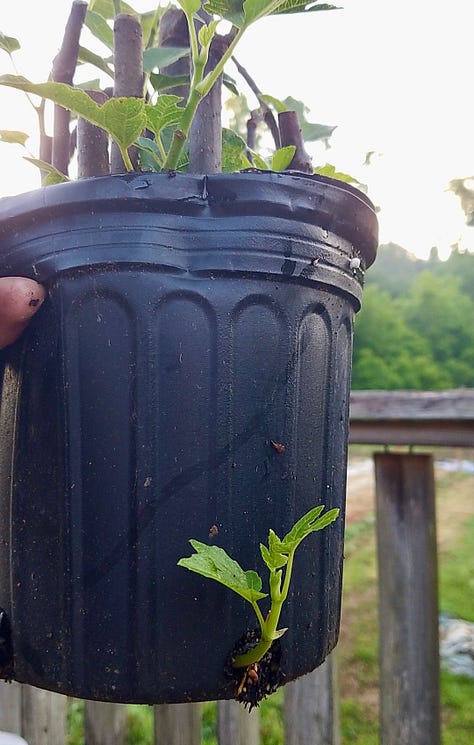
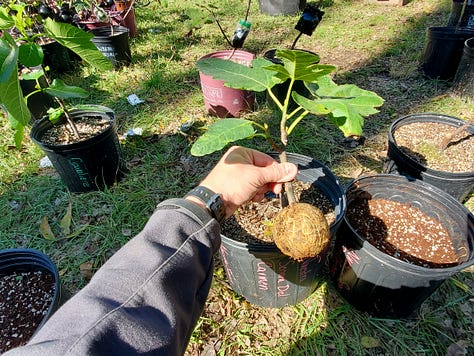
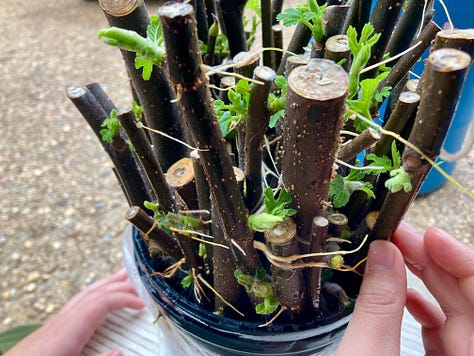
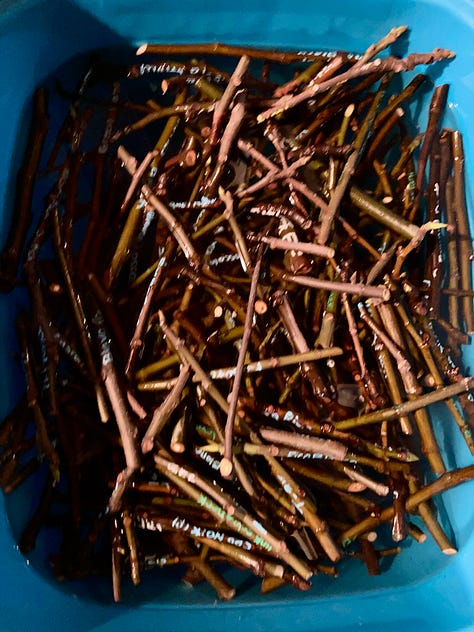
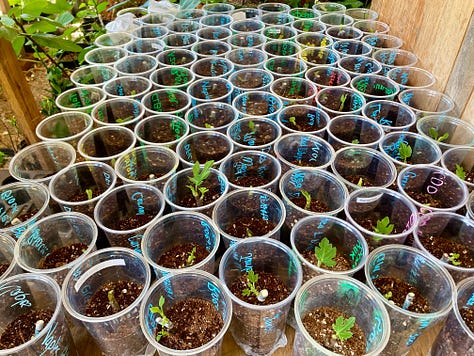
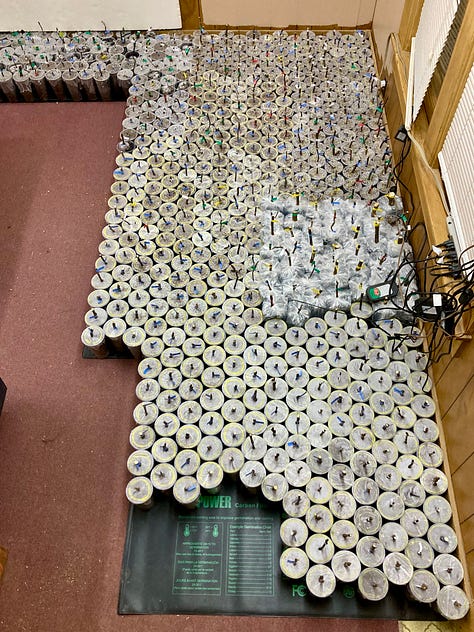
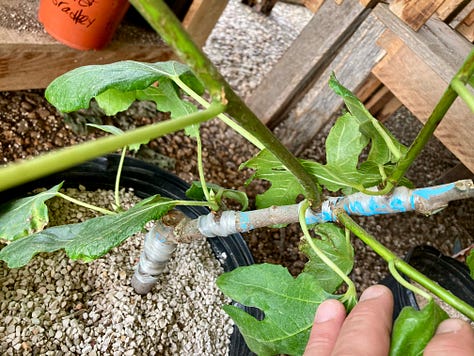
I’m always experimenting with different products though, especially for rooting cuttings. We have tried many different mixes that have included varying amounts of perlite, peat, coco coir, and DE. We have also tried a number of biologicals, like Mosquito Bits (BT for fungus gnats), inoculating with Mycostop, amyloliquifaciens, trichoderma, TPS myco mix, and different types of rooting hormones (Schultz powder, Dip’n Grow, Clonexgel, Hormadin). We’ve also been trialing commercial fungicides like Captan, Mefenoxam, Pyraclostrobin, and Boscalid.
If I were pressed, I would also recommend Mycostop (even though it’s a bit pricey) and Optisorb (diatomaceous earth). I think each of these can help increase one’s success rate in rooting. I expect this will change in the future as we try more things and we see more data.
Even though we are always reading and testing for better methods, figs are so easy and productive, I don’t really think any specific products are necessary for success. Cuttings in a raise bed outside have also worked for us and that only requires the cuttings and dirt from the yard.
Growing fruit trees and gardening definitely teaches me patience and persistence. I also feel it keeps me grounded and humble – I still have a lot of failures and there is always so much more to learn. The hard work gives me a sense of satisfaction, physical activity outside and brings me closer to my ancestors. My Dad, most of his siblings and my grandparents grew trees and vegetables, did canning, made their own soap and raised animals. My Mom’s father was even into grafting trees and collecting rare varieties, like hicans. The greatest blessing of all is the chance to do it with my son and having a wonderful wife who supports it.
JACK: It maybe has taught me some patience.
What are your favorite and least favorite things about growing figs?
JACK: Favorite, eating the figs and helping my dad with the trees. Least favorite, when we lose a tree or the birds peck the almost ripe figs, also whenever I have to fertilize the pots so many of them.
KEITH: My favorite thing is sharing fruit, trees/cuttings and information with others. Losing those coveted new varieties always makes me cringe though, especially when I see all of our dead-outs each season when we do an inventory. But I try not to focus on that and instead look at the successes and they always outweigh the failures.
Any tips you’d like to share?
KEITH: Don’t overwater/wet your rooting mix. Fertigate regularly once your trees are established. Patience is the most important ingredient for growing fruit trees, so don’t get discouraged if you have some setbacks – there are lots of people eager to help you succeed so reach out and ask for advice if you get frustrated. The fig community is very supportive.
JACK: Wash your cuttings well. I did not know how much grime was on them until we started scrubbing them. If you are going to store cuttings for a very long time, wrap them in parafilm. This will increase the time the cutting will last. Then double bag it and store it in the crisper. Fertigate your figs. The growth ours put on after we started doing this was amazing.
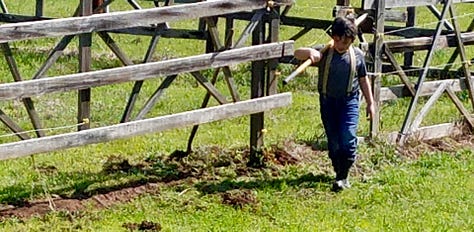
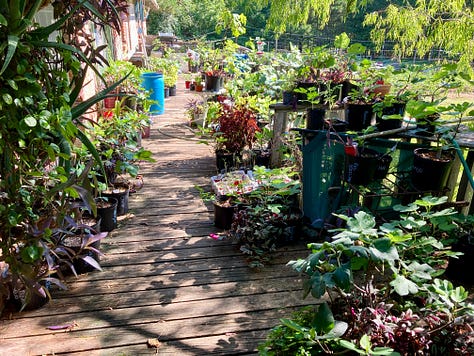
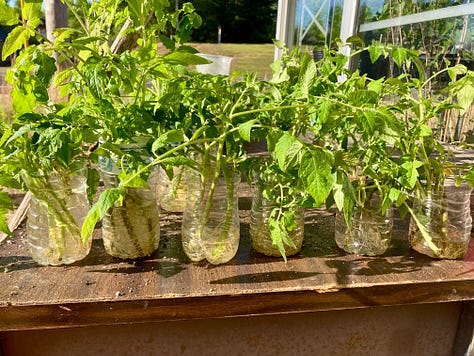
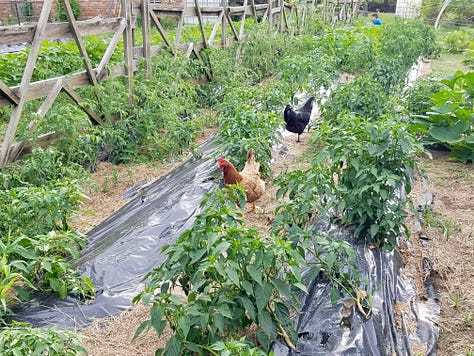
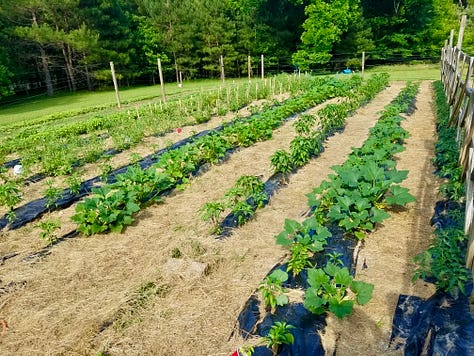
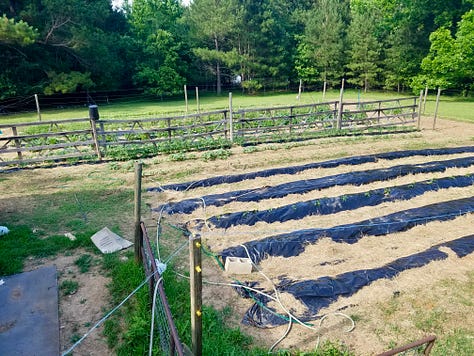
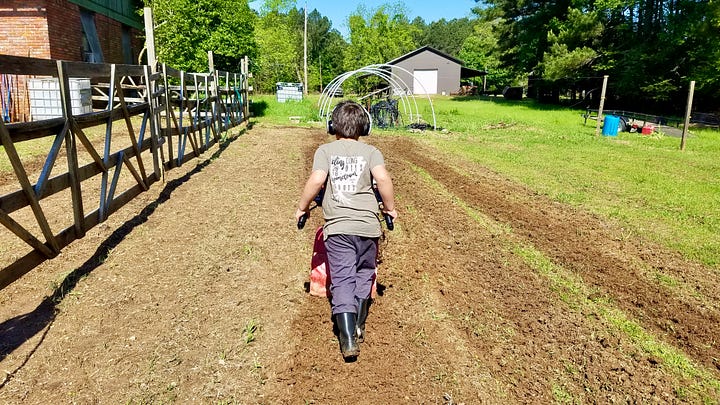
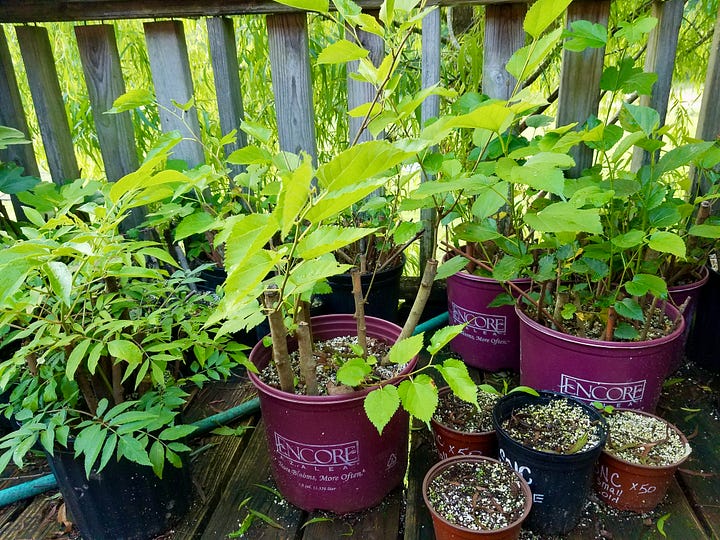
Okay, it’s come down to it, what are your most favorite and least favorite varieties?
KEITH: My favorites are, Nuestra Senora del Carmen, Maryland Berry, Navid’s Unk, BGM Unk, Melanzana Merdoscola, Labrijta, Red Sicilian, Red Lebanese Bekaa Valley, Negra d’Agde, Black Madeira, Adriatic JH and too many others to name.
I’m not a fan of Brown Turkey or Celeste so far, and some (Verte) have had a problem with splitting, but so far we haven’t cut any as we like to give them a long trial and will probably go inground before we decide. In those cases, we would graft over them with a better a variety, so they will live on as rootstock.
JACK:
Red Sicilian, very productive and sweet, nice berry flavor, medium size.
Navid's Unk Dark Greek, very similar to Red Sicilian but a little tighter eye and a little smaller fig.
Syrian Dark #2, also very productive extremely tight eye strong berry and moderately sweet, small fig.
Jack Lilly, sweet, moderate berry very nice balance, very tight eye, small fig.
Nuestra Senora del Carmen, very sweet, nice berry, large eye and splits if there is much rain, large fig.
Negra d'Agde, not very sweet but a lot of berry flavor more than any other fig on the list, tight eye and moderate size VERY productive.
Verte and Syiah Orak might have to go but it’s still a bit early.
What are you both looking forward to most this season?
KEITH: The varieties we haven’t tried yet. Probably Yellow Long Neck, White Madeira #1, a good Colonel Littman’s Black Cross, Castel Trosino, more NSDC, Moscatel Preto, Black Celeste, Angelito, CDD Mutante, Gozo Gem, I-258, Rossellino, De La Roca, Violette de Sollies, and many, many more.
JACK: Many varieties including: Colonel Littman’s Black Cross, Cosme Manyo, Black Manzinita, Castel Trosino, and Angelito.
Do you think you’ll ever stop growing figs, and where can people find you?
KEITH: No. Since we are planting many inground, I don’t see us ever not growing fruit trees. We can be found at our website, FigRoots.com, watch our videos at YouTube — fruitaholics, or find me, PapaFig on Ourfigs.com, FigFanatics.com, Facebook (PapaFig Fico). You can also check out my Instagram or Etsy accounts if any would like to know more about what I build:
Instagram — Saline River Workshop
Etsy — Saline River Workshop
JACK: No. FigRoots.com, AAAJacks on OurFigs.com and FigFanatic.com.








The future is looking brighter ,and more full of figs!